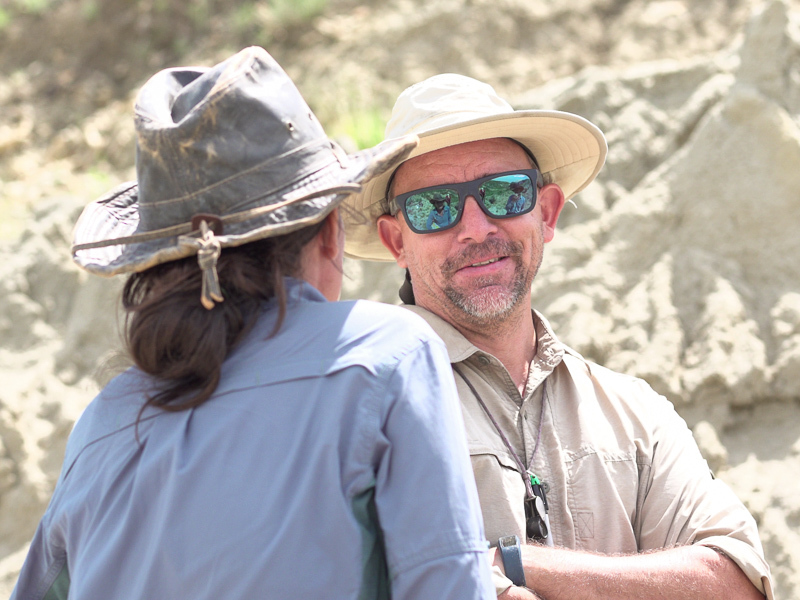Dueling Dinosaurs: Context is Key
For immediate release ‐ September 23, 2024
Paleontology
Contact: Jon Pishney, 919-244-7913. Images available upon request
 Geologist Eric Roberts pictured with paleontologist Lindsay Zanno.
Geologist Eric Roberts pictured with paleontologist Lindsay Zanno.
You have a lot of questions about how a tyrannosaur and a Triceratops came to be buried together one day in the Late Cretaceous. So do we. To study ancient animals, paleontologists need expertise in the biological sciences and the geological sciences. This is because fossils are shaped both by the animal in life, and by burial conditions in death.
Often, we team up with specialists in these fields, especially those with expertise in dating rocks, or decoding ancient environments. At the beginning of the Dueling Dinosaurs Project, we recruited geologist Dr. Eric Roberts from the Colorado School of Mines to help us understand how our two skeletons ended up entwined and what the environmental conditions were at the time.
During his first visit to the site where the Dueling Dinosaurs were discovered, Dr. Roberts stumbled across a rare occurrence … a bedded ash layer. Ashes act like broken clocks. They contain crystals that formed during ancient eruptions and can be used to estimate the age of fossils buried above and below them.
We are in the process of dating these ashes and combining that information with fossilized pollen grains and reversals of the Earth’s magnetic field to determine just how old (in time, not lifespan) our fossils are. We are also studying the conditions these animals were buried in. Was it an ancient flood? Earthquake? Riverbank collapse? Stay tuned as we investigate.
For more information about our upcoming activities, conservation news and groundbreaking research, follow @NaturalSciences on Instagram and Facebook.

